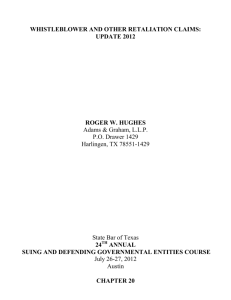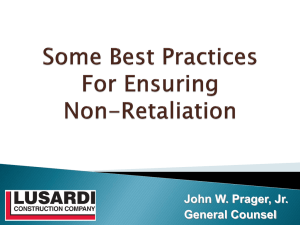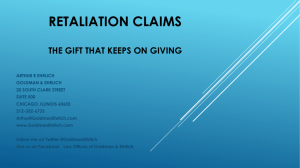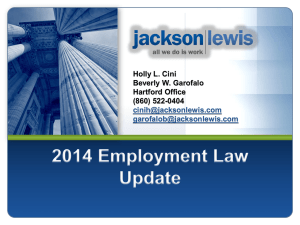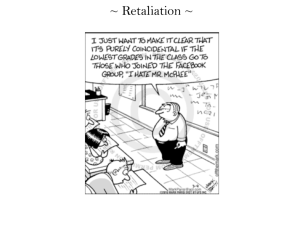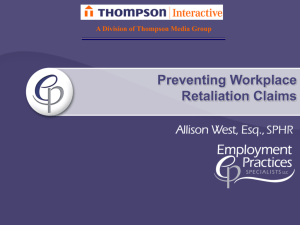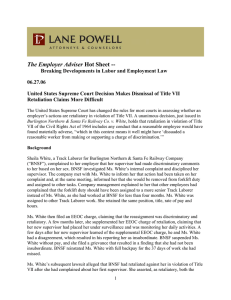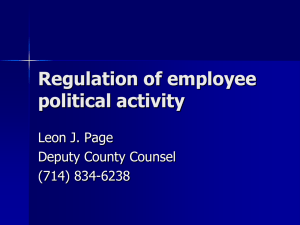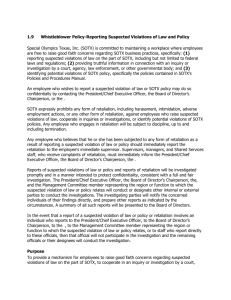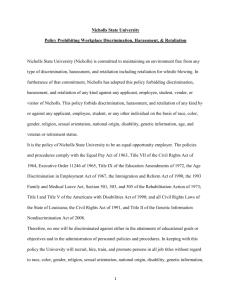How to Prevent Retaliation Claims Presented by Audrey J. Forbush
advertisement
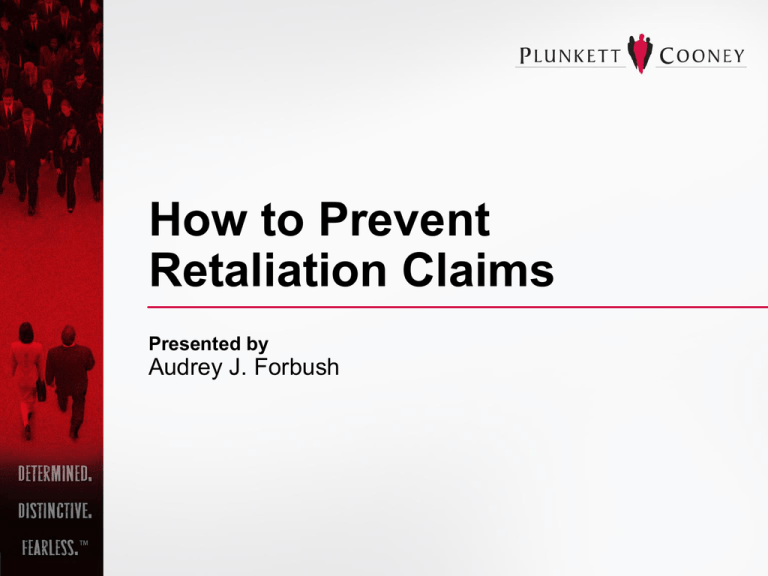
How to Prevent Retaliation Claims Presented by Audrey J. Forbush Retaliation Claims on the Rise Retaliation claims have nearly doubled since 1992. Per EEOC in 2006 = 22,555. Now represent 1/4 of all EEOC claims filed. What is Retaliation? In general, employers cannot retaliate against an employee for bringing a lawful claim against it or for asserting a legal right for participating in a protected activity. Protected Activity Protected activity under Michigan Civil Rights Law consists of : – Opposing a violation of the law, or – Making a charge – Filing a complaint – Testifying, assisting or participating in an investigation, proceeding or hearing under law. Pearce v Radio Shack, 2012 WL 2402021 (2012) * unpublished Examples Employees can't be retaliated against for: – Filing a Workers’ Compensation claim – Taking leave under Family & Medical Leave Act (FMLA) – Whistleblowing – Bringing discrimination claims against employer or reporting Title VII violation Continued Examples – Opposing harassment or discrimination in the workplace (ELCRA, MPWDCRA etc.) * must clearly oppose boss’ alleged actions – Making a claim under ADA or Age Discrimination in Employment Act – Reporting OSHA violations When Filing Suit Employee Must Show: – Engaged in protected activity – Employer knew about the protected activity – Employer took adverse employment action – Causal connection between protected activity and adverse employment action (Nguyen v City of Cleveland, 229 F. 3d 559 (6th Cir. 2000); DeFlavis v Lord & Taylor, Inc., 223 Mich App 432 (1997)) Continued When Filing Suit If employee proves those four elements, then burden shifts to employer to set forth legitimate, nonretaliatory reason for adverse employment action. If employer does so, then employee has opportunity to show that employer’s reasons are just pretext for retaliation. What is Adverse Employment Action? Either material changes in employment status (firing, demotion, change in pay/benefits or responsibilities/duties) or of such nature likely to deter victims of discrimination from complaining. Burlington v Northern & Santa Fe Ry.. Co., 126 S. Ct. 2405 (2006) Causal Connection Causal Connection = Significant Factor Why Retaliation Claims are Difficult to Defend? Many employers assume they are not liable for retaliation if the underlying claim is without merit - NOT TRUE Retaliation Claims are often hard to defeat at summary judgment stage – Timing is often an issue and can be enough to create a factual dispute Continued Why Retaliation Claims are Difficult to Defend? Retaliation claims can be difficult to defend to a jury Many people think that once you have “rocked the boat” with your boss or higher ups at work, your days are numbered. Best Practices to Prevent or Defend Retaliation Claims Have POLICIES in place that prohibit discrimination and harassment – Those policies should specifically PROHIBIT retaliating against those who complain of harassment or discrimination or who participated in an investigation – TRAIN / publish the policy regularly Continued Best Practices to Prevent or Defend Retaliation Claims Have a COMPLAINT PROCESS (usually contained in the policy) Conduct a thorough, objective INVESTIGATION DOCUMENT complaint and investigation and results MAINTAIN and update PERSONNEL FILES Continued Best Practices to Prevent or Defend Retaliation Claims DOCUMENT DISCIPLINE, poor work performance, issues, evaluations Monitor/SUPERVISE department heads to ensure employee has not been unfairly targeted due to protected activity Pay attention to TIMING CONSULT WITH LEGAL COUNSEL Proceed only after thoughtful consideration Question & Answers Thank You! Audrey J. Forbush (810) 342-7014 aforbush@plunkettcooney.com

